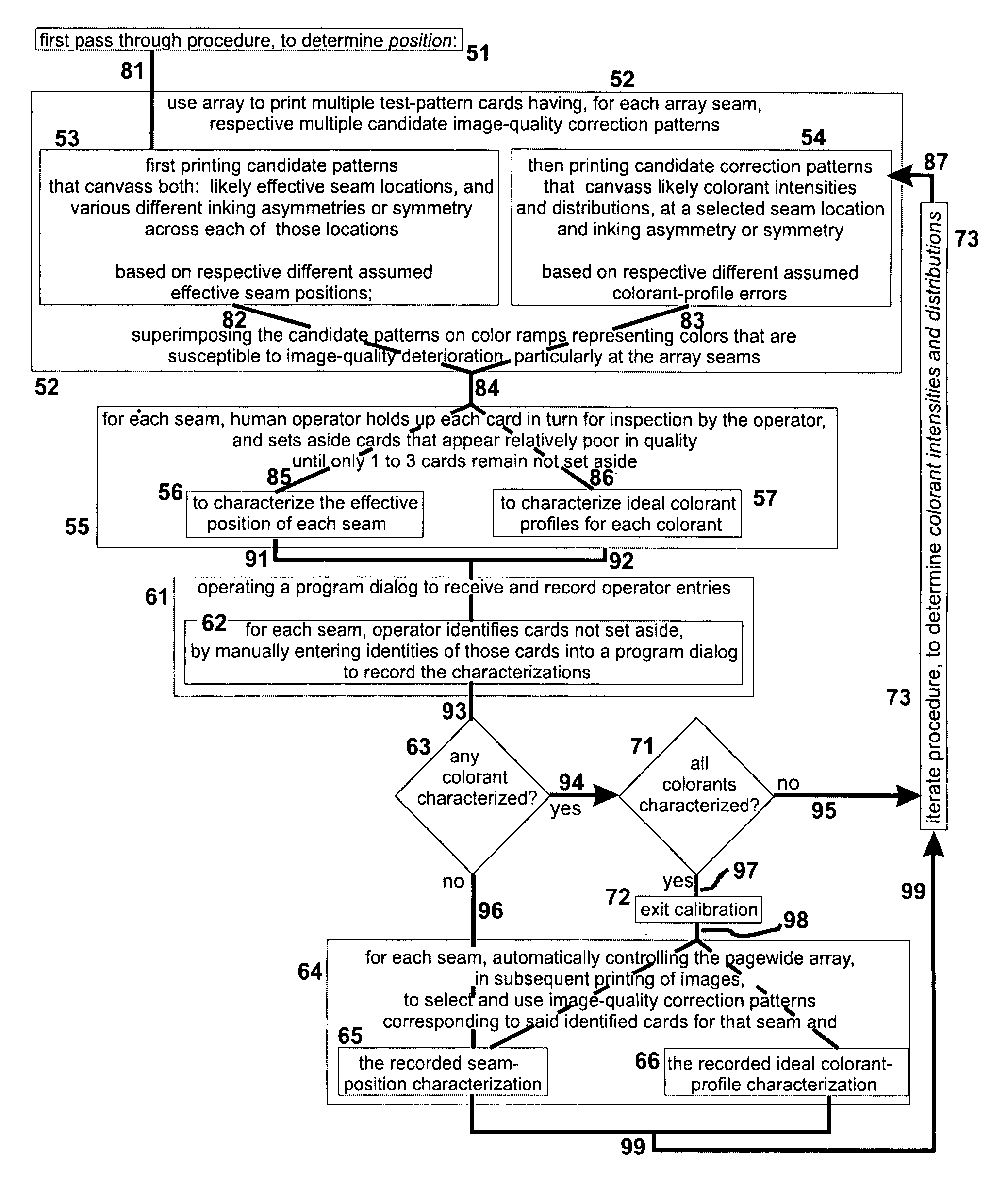Interactive visual card-selection process for mitigating light-area banding in a pagewide array
a technology of interactivity visual card and array, which is applied in the direction of electrographic process equipment, printing, instruments, etc., can solve the problems of undercutting the principal advantages, affecting the effect of inkjet dice, etc., and achieves poor perceptual results and cost of adequate scanning equipmen
- Summary
- Abstract
- Description
- Claims
- Application Information
AI Technical Summary
Benefits of technology
Problems solved by technology
Method used
Image
Examples
Embodiment Construction
1. Introduction and Overview
[0094]Preferred embodiments of our invention are commonly used to improve image quality of printers in a retail service facility known as a “photo kiosk”. This environment calls for high volume, high throughput, very high reliability, and low unit cost with highly uniform good quality of small printed images.
[0095]Each of these demands militates strongly in favor of pagewide arrays, which involve much less apparatus motion than scanning machines. As explained earlier, however, each pagewide array is susceptible to objectionable light-area banding in the printed images.
[0096]Hence the above objectives of a photo-kiosk printer are advanced by resolution of the banding problem. The reasons for the banding are as follows.
[0097]A pagewide array is made of multiple short inkjet printing elements, “dice”, positioned generally end-to-end but staggered from side to side as will be seen. For various reasons, image portions printed near the seams between adjacent di...
PUM
 Login to View More
Login to View More Abstract
Description
Claims
Application Information
 Login to View More
Login to View More - R&D
- Intellectual Property
- Life Sciences
- Materials
- Tech Scout
- Unparalleled Data Quality
- Higher Quality Content
- 60% Fewer Hallucinations
Browse by: Latest US Patents, China's latest patents, Technical Efficacy Thesaurus, Application Domain, Technology Topic, Popular Technical Reports.
© 2025 PatSnap. All rights reserved.Legal|Privacy policy|Modern Slavery Act Transparency Statement|Sitemap|About US| Contact US: help@patsnap.com



